Podcast: Play in new window | Download (Duration: 25:23 — 40.1MB)
Subscribe: Apple Podcasts | Spotify | Amazon Music | Android | Pandora | iHeartRadio | JioSaavn | Podcast Index | Email | TuneIn | RSS | More
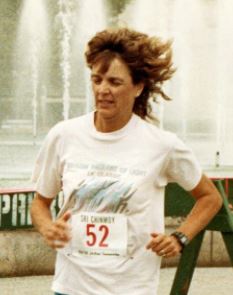
Sue Ellen Trapp was one of the elite women pioneer ultrarunners who burst into the sport in the 1970s. She was the fourth person to be inducted into The American Ultrarunning Hall of Fame. She quickly achieved world and American records and showed how fast and how far women could run. With a busy life including her dental practice and family, she rose to the top of the sport twice, after an eight-year ultrarunning retirement, setting world and American records in her 40s and 50s.
| Learn about the rich and long history of ultrarunning. There are now eleven books available in the Ultrarunning History series on Amazon, compiling podcast content and much more. Learn More. If you would like to order multiple books with a 30% discount, send me a message here.
|
Sue Ellen (Hamilton) Trapp (1946-), of Fort Myers, Florida was born and raised in Chicago, Illinois. Her parents were Robert Roy Hamilton (1908-1971), a tool and die maker, and Marie Blanche (Festner) Hamilton (1910-1999). She had a brother, Ross Hamilton (1942-2014) of Chicago. Her ancestors were from Pennsylvania, Germany, Austria, and Denmark.
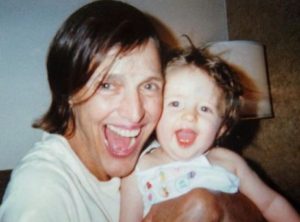

In the late 1960s, Sue Ellen went to dental school and married Ronald Edward Trapp (1943-), of Minnesota, who was also a dentist and entered the navy in 1969. He had been a cross-country runner in college. In 1971, Ron was stationed in San Francisco, California, as Sue Ellen was finishing dental school at the University of Illinois Dental School in Chicago. She gave birth to her daughter Kristina Trapp (1971-) in April while in California, and then graduated from dental school in June.
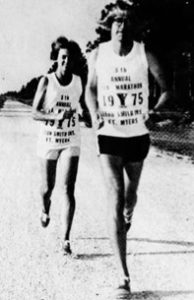

Trapp said that she thought the baby weight would melt off, but it never did, so she took up competitive tennis and swimming, with some running to help her get into shape. Her first road race came in 1971, San Francisco’s 12 km Bay to Breakers. She said, “I thought I’d just try it, and it was awful.” Later that year, the family moved to Lehigh Acres, Florida, a suburb of Fort Myers. She and Ron set up a dental practice together and Ron took up running and tennis, too. Results of her tennis tournaments would appear in the paper and starting in 1975, she was doing well in running races, too. In 1975, Sue Ellen ran her first marathon at Gainesville, Florida, with 4:04, but gained speed quickly. She placed second in the 1976 AAU Marathon Championships in Crowley, Louisiana, with 3:10:32. The two of them won husband/wife division of that championship. That marathon finish qualified her to run the Boston Marathon by 20 minutes.
![]()
![]()
![]()
![]()
First Ultra
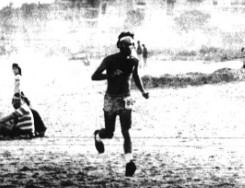

After stacking up many wins during 1978 of distances from 5 miles to the half marathon, it was time for Trapp to try an ultramarathon. Her first ultra, held on December 30, 1978, was an unusual one. She ran with a field of 54 runners in the Florida Space Coast 50 km, thought to be the world’s longest beach run. At age 32, she was the first woman finisher and the tenth overall, with a time of 4:09:42. That impressive time on such a rough surface, ranked her 5th in the world for the 50 km distance.
1979-1981 – World and American Records
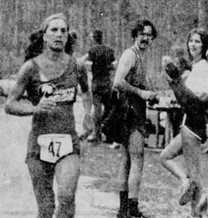

In February 1979, Trapp went to run a road 100K in Miami, Florida, with a massive field of 88 runners. It was also the Road Runners Club of America (RRCA) National Championship. They ran a 3.3-mile loop in a park 19 times. She was paced by two male members of the Fort Myers Track Club. During the race, she paused for a couple minutes to change out of her soaking wet shirt. The delay cost her the win. When she finished, she thought she had broken the American Record by an hour and a half, with 9:12:38, but Lydi Pallares (1938-) of Miami, Florida, won the race two minutes ahead of her. That race hooked Trapp on ultra distances. She said, “I just wanted to see if I could do it. Some people probably think I’m crazy. I am. It was such an exhilarating feeling. At 40 miles, I started feeling it, but something makes you go on. I’ve never had nine hours go so fast.”


Cleary, Trapp had emerged as the one of the top female ultrarunners in the country. Marcy Schwam competed out west on the same day, running the Yakima 100K, finishing in 8:51:09 a few hours after Trapp’s finish. Schwam and slowed near the end of the race, believing she had the American record in the bag. It was several days later when she found out the Trapp ran faster and claimed the record. Schwam would break the record in Spain the following year.


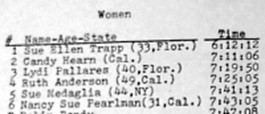

Nick Marshall commented on the state of women’s ultrarunning in 1979: “Although 180 different women finished one or more races in 1979, almost a threefold increase from the preceding season, these areas remain predominantly a male preserve. While six races each had at least ten women competitors in them, there were eighteen ultras that featured all-male casts, and numerous others had only a solitary female mixed in with the men. Parity is coming, but very slowly. There were enough women running fast enough, though, that most national records were blasted off the books.” For 1979, Trapp was named the best U.S. Female Ultramarathoner by Runner’s World Magazine.


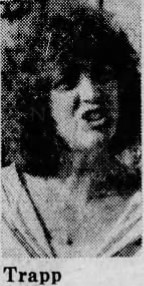

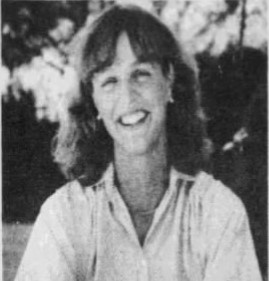

Eight-Year Retirement
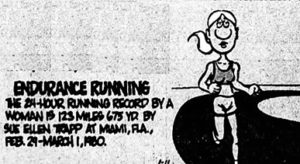

![]()
![]()
Second Ultrarunning Career
In 1989, at age 43, Trapp fully got back into the ultra driving seat. She changed things up and competed on the trails for the first time. She ran the 1989 Leadville 100 and finished in fifth place with a time of 25:19:47. That was amazing because she came from sea level and had to climb to nearly 13,000 feet. She returned to Leadville in 1991, finished in second with 24:21:22. But after that she returned to compete on roads and tracks.
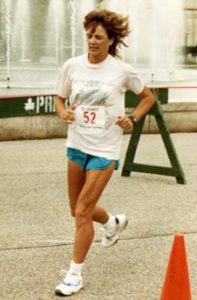

In September 1989, Trapp again returned to one of her great strengths, the 24-hour race. She went to New York City to run the Sri Chinmoy 24 at Flushing Meadows, which was the national championship. At this race, she would race against young Ann Trason (1960-) for the first time. During Trapp’s running retirement, Trason had taken over the ultrarunning women’s world, snatching away many of the records Trapp used to have. Trason now held the 100K World Record that was nearly an hour faster than Trapp’s record eight years earlier.


1990
That accomplishment sent Trapp to compete at the 1990 24-hour World Championships at Milton Keynes, England, on an 890-meter loop in a mall with a slick marble surface. This was the event where Don Ritchie of Scotland set a world indoor record of 166 miles. Things didn’t go well for Trapp, she stopped after only 49 miles.
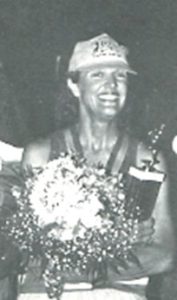

A couple months later, in May 1990, Trapp was back in New York City to run the Sri Chinmoy 100 Mile Road Race at Flushing Meadows Park on a one-mile loop. It would be one of the finest races of her life. She ran nearly all the race with her friend Sid Christie (1945-), also a dentist, who was using the race to train for Western States 100. They established a steady pace race strategy. At mile 40, Trapp developed blisters but pushed on. They hit the 50-mile mark in fourth place with 7:08:43. Still running together, they hit the 100 km mark in second place, with 8:58:35. At mile 66, they went in the overall lead. A couple miles later, at dusk, a couple of people walking in the park were oblivious that there was a race going on and ran into Trapp and Christie. Christie ran on ahead but was usually no more than by a half lap ahead. Christie was the overall winner and Trapp finished two minutes later with 15:05:51 as the women’s winner. She set an American Masters 24-hour record. She said, “I just loved the one-mile course and the people. I felt great.”
1991
Trapp competed again at 100 kms in February 1991 and won at Jed Smith 100K in Sacramento, California with 8:38. That put her on the USA 100K team, and she started to compete internationally each year at the World Championships.


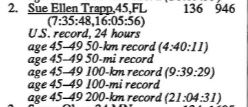

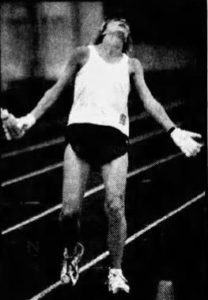

Trapp had her only problems. At mile 40, she developed bad blisters, and toward the end of the race, her neck was so sore that she had to run with her eyes pointed skyward. She said, “I felt like I had gotten whiplash.” Her friend, Sid Christie, said, It was inspirational. I thought she’d fall over backwards.”
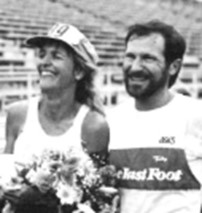

The Oregonian wrote, “Trapp, who averaged a sub-10-minute pace, kept up a slow jog over the last half-hour of the race. Ron Pirrung walked beside her. Only when she stopped at the finish line with Pirrung, and staggered a couple of steps, did her exhaustion show.” A few days later, she said, “I enjoyed it. I probably have forgotten a lot of the pain already. You always blank that out or else you’d never run again.”
1992
I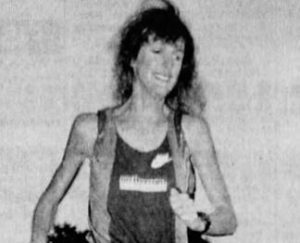

1993
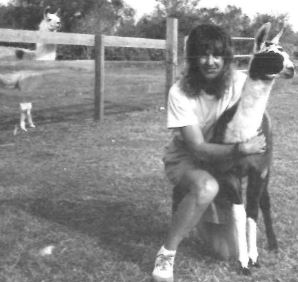

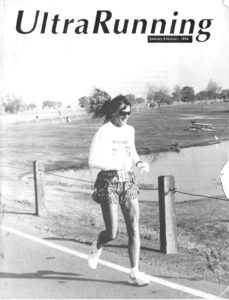

In the years to come, she ran at Olander another seven times, coming away with five wins. For almost a decade she dominated in 24-hours and won an unprecedented seven national 24-hour run titles (most of the time finishing among the top 5 men in the race).
When asked about her training for 24-hour races, Trapp said, “I really believe if you’re not prepared to do a 24-hour race, you shouldn’t do one. I would always know if I was ready. I would look at races about three months before the event. I think it’s important to really be in shape for three months. I would lead up to a race with 120-mile weeks and hold it there for three weeks. Then, I would feel confident and ready.”
48-Hour Race Dominance
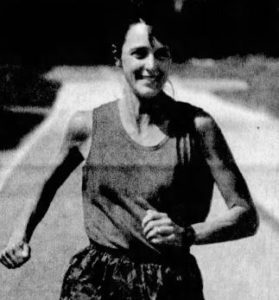

Norman Klein (1938-) wrote, “The 48-hour race can basically be described in three words, Sue Ellen Trapp. Knowing how tired she had to be, we were all impressed by her continual smile and most pleasant demeanor. If ever someone displayed grace and dignity during the heat of competition, Sue Elen managed to do just that. Ron Trapp stayed awake for her the entire time, provided information to her regarding her pace and splits, made sure she fueled properly, and gave her encouragement when the going got tough.”


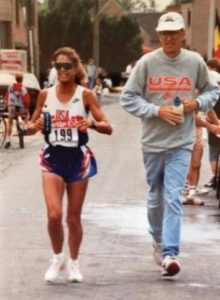

In 1996 Trapp continued her 48-hour career by running at the World Championship in Surgeres, France on a 300-meter track. Yiannis Kouros was the overall winner with 294 miles, but Trapp, age 50, won among the women, raising her American Record to 225.8 miles. She became the oldest woman to set an American Record in running. She missed the World Record by only two miles, but set a world record for the W50-54 age group. She never took sleep breaks and only stopped to rest twice, once she put up her sore feet for 25 minutes, and another time for 15 minutes. “Anybody can stay up for 24 hours, but in 48 hours, you have got to still run well. You need a little rest. It’s hard to balance that. You go through a lot more periods of death and recovery than you do in any other race. You go down and think, this is it, I’m going to be lucky to stand upright and then something comes over you and you get that other wind. It goes back and forth.” She had the reputation of rarely walking in a race.
![]()
![]()
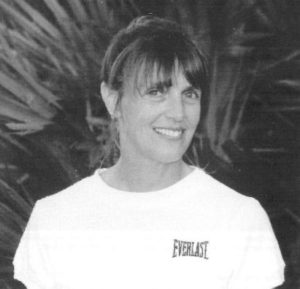

Trapp’s 1997 48-hour record of 234 miles was broken in 2006, but stood as an American record until broken in 2014, when Traci Falbo (1971-), of Indiana, reached 242 miles at Six Days in the Dome in Anchorage, Alaska. Trapp still holds the W50-54 age group world record as of 2024.
In 1999, Trapp tore an ACL when her dog ran into her. She had that repaired and came back to run one more time at Surgeres, France and covered 206 miles in 48 hours, which still is a W55-59 age group America record.
Final Running Years
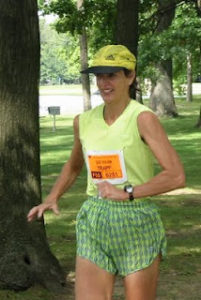

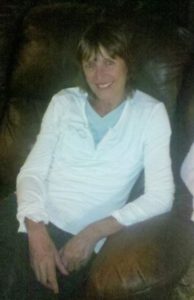

In 2005, she was inducted into the USATF Masters Hall of Fame and in 2009 she was inducted into the American Ultrarunning Hall of Fame. In about 2009 she underwent spinal-fusion surgery. She ran her last ultra in 2011 at the age of 64, and covered 91.31 miles in 24 hours, for an American record for the W60-64 age group. When asked why she was still running, she replied, “Things are better. Things smell better, they taste better. There is nothing like being in shape, even at my current level.”
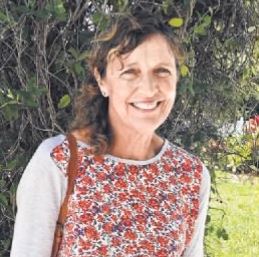

Trapp held 25 American records in ultrarunning and three world records. In 2024, she was 78 and living in Fort Myers, Florida with her husband Ron.
Personal Bests:
- Marathon – 3:00:42
- 50 km – 4:40:11
- 50 miles – 6:12:12
- 100 km – 8:05:16
- 100 miles – 15:05:51
- 24 hours – 145.2 miles
- 48 hours – 234.8 miles
Sources:
- The Orlando Sentinel (Florida), Jul 26, 1964
- News Press (Fort Myers, Florida) Nov 3, 1971, Jul 1, Oct 15, Nov 17, 1973, Jan 15, 1974, Apr 20, Oct 12-13, 26-27, Dec 28, 1975, Mar 20, Aug 29, Oct 18, 1976, Apr 21, 1977, Jan 28, 1979, Mar 3, 1980, Oct 10, 1991, Feb 11, Sep 30, Dec 9, 1993, May 26, 1996, Jul 17, 1996, May 5-6, 1997, May 24, 2005, Jul 27, Aug 13, 2014, Nov 23, 2016
- The Tampa Tribune (Florida), Dec 23-24, 1975
- Nick Marshall, Ultradistance Summary, 1979, 1980, 1981
- Florida Today (Cocoa, Florida), Dec 31, 1978
- The Miami Herald (Florida), Jan 28, 1979, Feb 24, 1981
- Edmonton Journal (Canada), Jan 4, 1980
- Oregon Journal (Portland, Oregon), Aug 4, 1980
- Chicago Tribune (Illinois), Oct 5, 1981
- Daily News (New York, New York), Sep 19, 1989
- The Oregonian (Portland, Oregon), Sep 30, 1991
- Tampa Bay Times (Florida), Oct 24, 1994
- South Florida Sun Sentinel (Fort Lauderdale, Florida), Jan 2, 2011
- Trail and Ultrarunning, “Sue Ellen Trapp: Interview” http://trailandultrarunning.com/sue-ellen-trapp-interview/
- Ultrarunning Magazine, Dec 1993, Mar 1997, Dec 1991, Jan/Feb 1994


